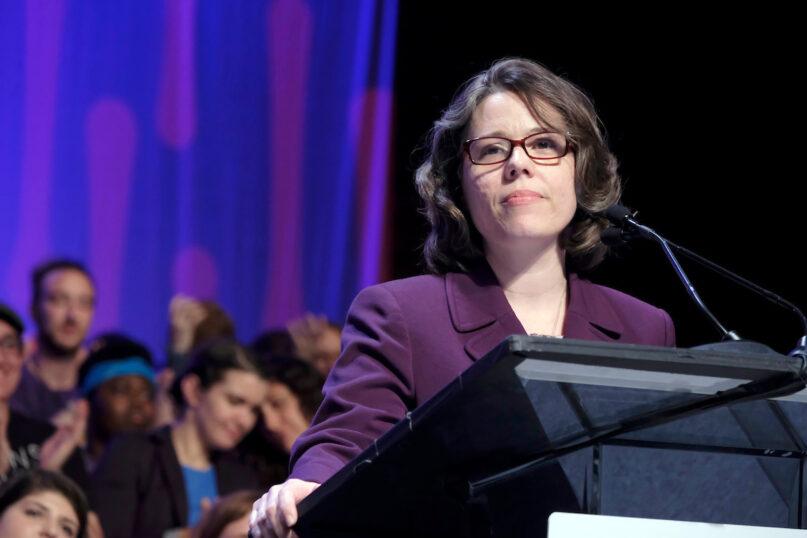(RNS) — The Rev. Susan Frederick-Gray was a high school softball player when she first organized others to act on their moral outrage. A teacher had barred girls from playing third base, catcher or shortstop during gym class. Frederick-Gray enlisted the other girls in class to boycott phys ed softball until their demands were met.
“We were threatened by the gym teacher with failing gym,” she told Religion News Service in a recent video interview. She answered, “You can fail me, but I’m not going to stop until we can play wherever we want to play.” The girls ultimately prevailed.
Today Frederick-Gray, who is nearing the end of her six-year term as the first woman president of the Unitarian Universalist Association, has graduated to issues such as reproductive and LGBTQ rights, employment discrimination and voter suppression, all against the tumultuous backdrop of a pandemic, insurrection, racial reckoning and the fall of Roe v. Wade.
But her early victory is emblematic of how Frederick-Gray has led her denomination of more than 1,000 progressive noncreedal congregations, colleagues say.
“Susan has a clear moral center. She cares about people, and she is bones deep about the ministry of liberation and care,” said the Rev. Lauren Smith, director of stewardship and development for the UUA. “And she has helped the UUA, and Unitarian Universalism, embody the values that she embodies.”
Frederick-Gray’s successor, Sofía Betancourt, who will be the first woman of color elected UUA president, enters office on July 10.
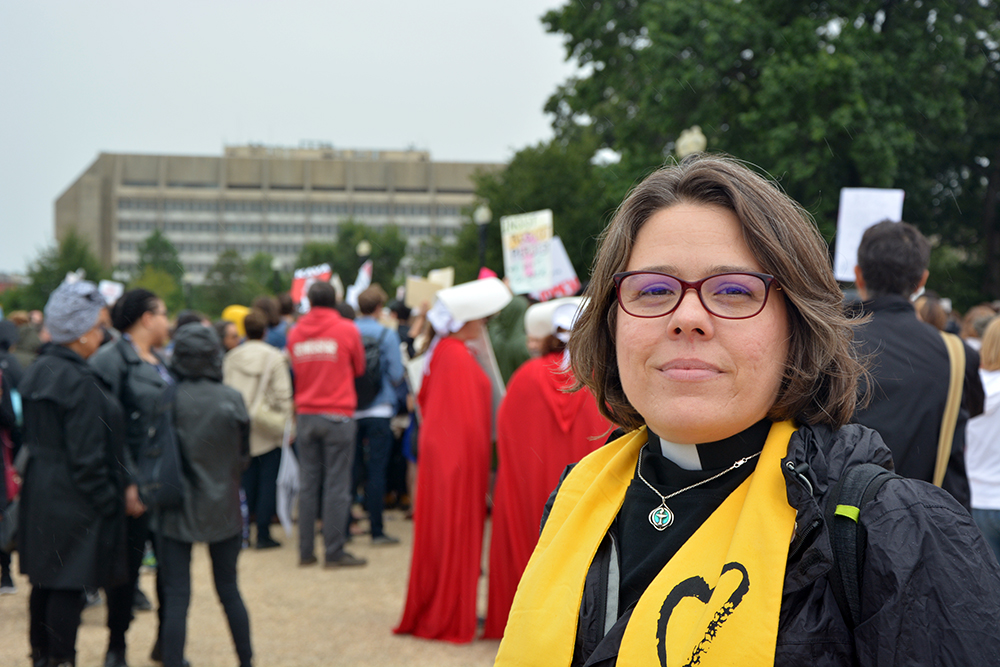
The Rev. Susan Frederick-Gray during hearings for Supreme Court nominee Brett Kavanaugh on Capitol Hill on Sept. 27, 2018. RNS photo by Jack Jenkins
The youngest of three kids, Frederick-Gray was raised a Unitarian Universalist in Kirkwood, Missouri. She was in college at the University of Wisconsin when her mother mentioned ministry to the molecular biology major.
“It seemed scary to think about talking to people every week and having something to say,” Frederick-Gray recalled. “But it just had a hold of my heart and spirit at that point.”
She earned a degree from Harvard Divinity School in 2001 and interned at a Unitarian Universalist church in Nashville, Tennessee. Her first week there, she met her now-husband, Brian Frederick-Gray, who was a student at Vanderbilt Divinity School pursuing ordination in the Disciples of Christ. The two were married a year later.
By the late aughts, Susan Frederick-Gray was lead minister of the Unitarian Universalist Congregation of Phoenix when, in 2010, Arizona passed Senate Bill 1070, a sweeping anti-immigration measure backed by Sheriff Joe Arpaio and criticized as inscribing racial profiling into law. She was among more than 80 demonstrators arrested at a protest after it passed.
“She placed her arms inside of what we call a lockbox and literally physically locked herself alongside community members,” recalled B. Loewe, then a local organizer with the National Day Labor Organizing Network.
“That was my intro to Reverend Susan,” said Loewe, “someone willing to take great personal risk, because she knew that her daily life and the daily risks that she faced paled in comparison to the undocumented community and individuals within it in a state like Arizona.”
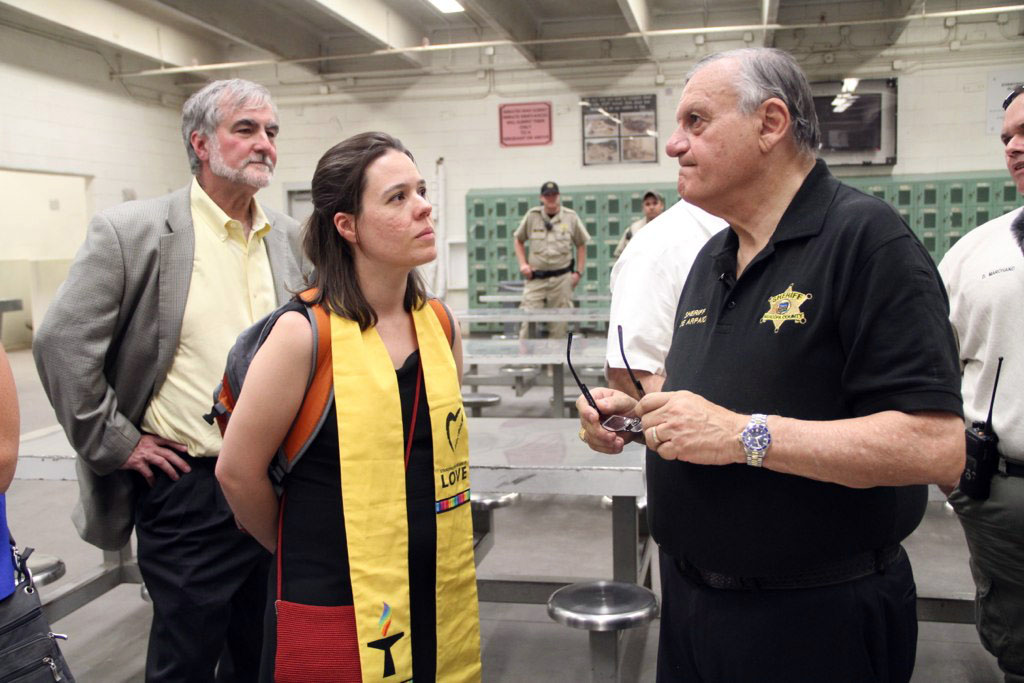
The Rev. Susan Frederick-Gray, left, confronts former Sheriff Joe Arpaio, right, during a tour of Tent City Jail in 2012 in Arizona. Photo © Dea Brayden/UUA.
In 2012, a Justice General Assembly held in Phoenix to educate UUs on the U.S. immigration system concluded with a candlelight vigil at which 3,000 participants, many sporting yellow “side with love” shirts, sang and prayed outside of Tent City Jail, a 7-acre outdoor prison that left inmates vulnerable to the stifling desert heat.
“That (vigil) was part of the movement that eventually led to the un-election of Sheriff Joe Arpaio in November of 2016 and the closure of Tent City Jail,” said Frederick-Gray.
It was also the beginning of her call, she said, to run for UUA president.
Her election, in 2017, meant radical changes for the Frederick-Grays, including a cross-country move to Massachusetts, Brian Frederick-Gray’s temporary pivot to stay-at-home dad and the addition of Hercules Mulligan Frederick-Gray, a Cavalier King Charles Spaniel, fulfilling a promise to their son if they won the vote.
One week after arriving in Boston, Frederick-Gray received word that white supremacists would be marching on Charlottesville, Virginia.
“It was very clear both in what I had seen in Phoenix, Arizona, where there are organized white supremacist groups, but also with the election of Donald Trump in November 2016, that there was a growing, emboldened, authoritarian, nationalist movement,” said Frederick-Gray. “And so I felt like it was absolutely important that I show up as president of the UUA.”
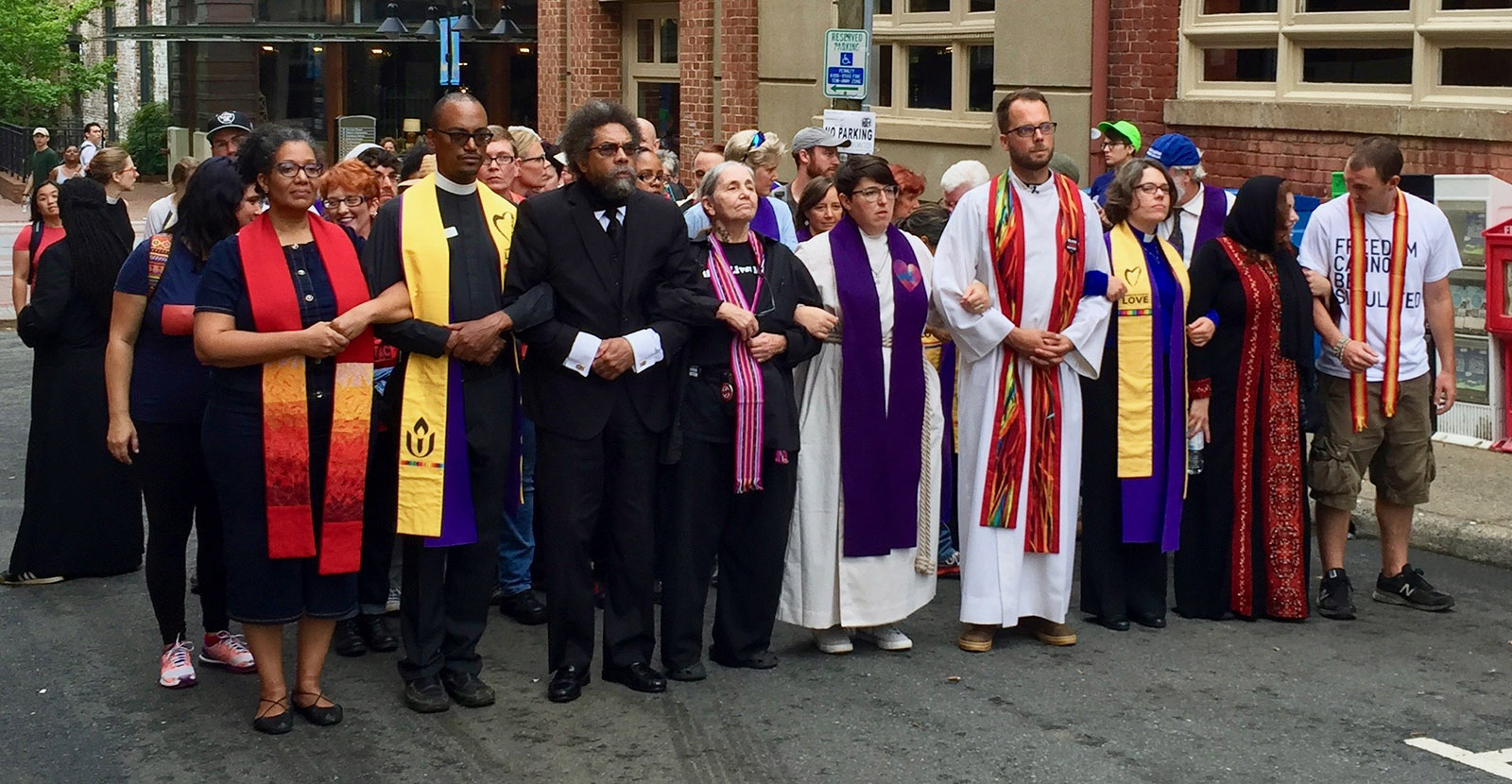
The Rev. Susan Frederick-Gray, third from right in front row with yellow stole, marches with other clergy in Charlottesville, Va., in 2017. Photo © 2017 Nora Rasman/UUA
In Charlottesville, she and other faith leaders moved to block the entrance to Emancipation Park to prevent white nationalist protesters wearing Nazi emblems and wielding shields from holding the Unite the Right rally. When the white nationalists marched toward the faith leaders, clubs in hand, she watched as the police stood down.
“I’m really grateful that she was able to be there and to be able to give witness, especially right at the very beginning of her tenure as president,” said Brian Frederick-Gray. “It was a time for her to be able to show that these weren’t just talking points during the campaign. This actually was the way she was going to lead.”
Charlottesville led directly to UU the Vote, an initiative that placed organizers in Wisconsin, Pennsylvania and Georgia to partner with local leaders to turn out the vote in places in those crucial swing states often overlooked by the major parties. In the lead-up to the 2020 election, 5,000 UU volunteers contacted more than 3 million potential voters.
“It gave people a sense of agency at a time when so much felt out of control,” said Smith.
Frederick-Gray came to the UUA presidency at a precarious juncture internally as well. Her predecessor resigned amid controversy about racial disparities in UUA hiring practices. Under Frederick-Gray’s oversight, the UUA overhauled its hiring policies, improving diversity and setting measurable goals to tackle cultural changes. In six years, the percentage of people of color in top leadership roles has jumped from 14% to 66%.
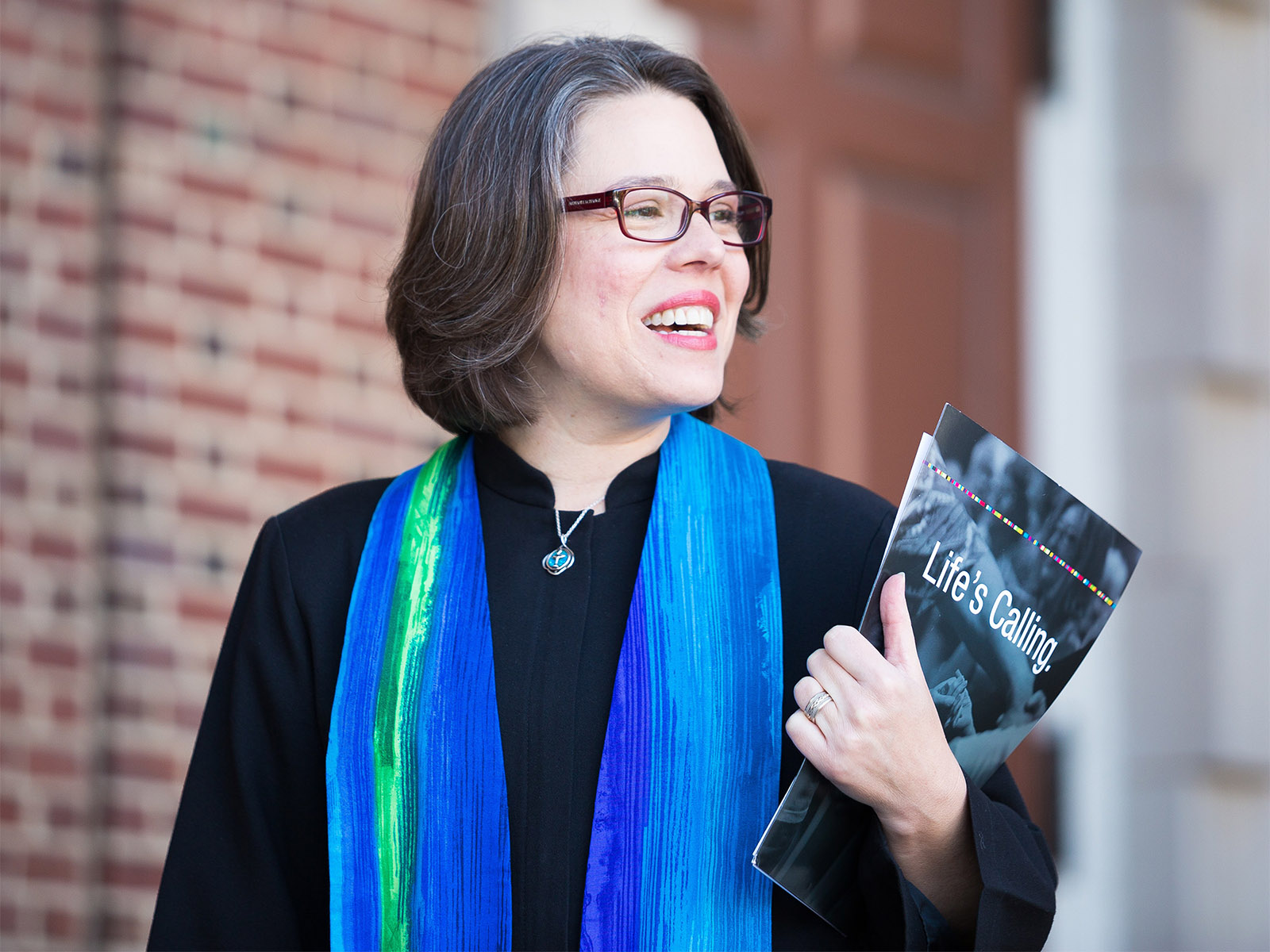
The Rev. Susan Frederick-Gray in 2017. Photo © Visuals by J. McKenzie
Rarely did the largely progressive UUs make Frederick-Gray’s gender an issue, but, she said, “I’ve experienced similar kinds of things that others in leadership experience as women, where sometimes something has to be said by a man for it to be heard, even if I as president have said it.”
Frederick-Gray said it was because the UUA was actively listening to voices from the margins that she became aware early in the pandemic of COVID-19’s impact on poor communities, communities of color and disabled communities. She surrounded herself with public health officials who overwhelmingly advised that halting public gatherings would save lives.
Late in the evening on March 12, 2020, Frederick-Gray sat at her desk in her apartment’s cramped guest room with CNN and MSNBC on in the background as she made calls to other senior executives. Despite fears that people would think her hysterical or alarmist, Frederick-Gray sent out a denominationwide email strongly recommending that congregations avoid gatherings of more than 25 people.
“It was the scariest moment of my leadership. Recommending that congregations stop gathering, one, is just unheard of in religious community, but two, the UUA doesn’t usually make broad directives. That’s not our job. We’re a congregational polity, so to act in that way is countercultural,” said Frederick-Gray. “But it was so clear to me that if we centered what was good for our overall communities … we needed to do everything we could to slow the spread and to protect the most vulnerable.”
Loewe said the key to Frederick-Gray’s success has been to approach the job pastorally. “She has showed up as a minister, someone who is not just there to be an administrator and not just there to be a callous political leader, but someone who was raised in her faith, is deeply rooted in it, and deeply believes it can provide what each of us are looking for, to keep our heads up in these times.”
